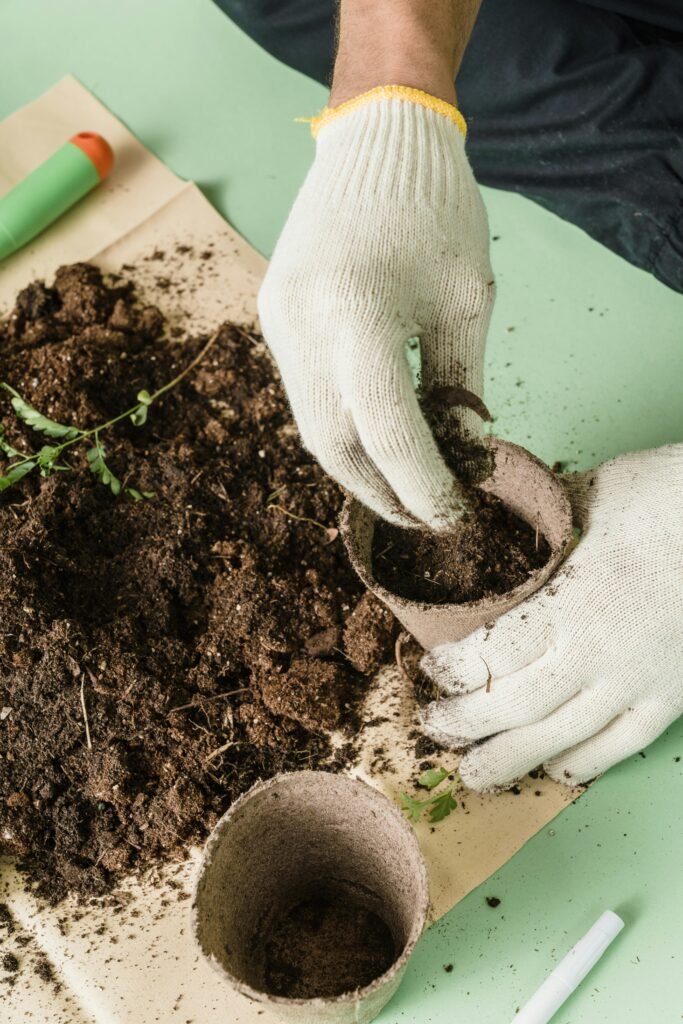
Picture a farmer looking at vegetables he cannot sell because floodwater stopped the truck, or a shop owner telling customers there is no sugar because a storm delayed it. That is what climate change does to India’s supply chains—the paths goods take from fields to your hands. A climate resilient supply chain can handle these problems, get back on track fast, and adjust to stay strong. In India, where rain floods roads, heat dries crops, and winds damage towns more each year, this is a big deal. Let me explain what this resilience is, where things go wrong, how we fix it, and why it helps you—simple and clear, no matter where you are reading from.
What Is Climate Resilience?
Climate resilience is when a system—like a supply chain—can face bad weather, recover quickly, and change to keep working. Supply chains are how goods move: farmers grow potatoes, factories pack them into fries, trucks drive them across highways, and stores put them on shelves. When a storm floods a bridge, that trip stops. In India, places like Assam get too much rain, while Rajasthan gets too little—both cause trouble. A resilient supply chain finds a way to keep going, no matter what happens.
Why does this matter to anyone? Businesses need goods to sell—potatoes for fries or cotton for shirts. Climate change makes weather worse, and that blocks deliveries. Resilience keeps money coming in and people working. It also means sustainability—using water, fuel, and land wisely so future kids have enough. India is growing fast, and weak supply chains could slow it down. So, this is about keeping life steady now and later.
Why India Needs This Now
India has a tough time with climate—rain floods the south, heat burns the north, winds hit the coasts hard. These supply chains stretch over a huge country, moving rice, jeans, even phone chargers. When a flood covers a road, farmers cannot sell crops, and shops run out of stock. India wants its economy to grow a lot—think busy factories and full markets—in the next few years. But if climate keeps breaking supply chains, that growth hits a wall. Building resilience is not just smart—it is necessary to keep things moving.
Finding Weak Spots in India’s Supply Chains
To make supply chains strong, we need to find where they break. Start with buildings—warehouses holding rice, factories making clothes, and hubs sending out boxes. If a warehouse is near a river, one big rain can flood it and ruin everything inside. Heat can spoil goods too—think milk turning bad in an old shed under a hot sun. Companies need to check every spot and ask: can water, wind, or heat hurt this? Fixing the weakest places first stops problems before they grow.
Next, look at transportation, that is, how goods travel. Trucks roll down roads, trains run on tracks, but weather can stop them. A landslide might block a mountain road, leaving drivers waiting for days. Storms can flood ports, keeping ships from unloading shoes or spices. Businesses should map their usual paths—where trucks go, where trains stop—and think what could fail. Maybe a side road helps, or extra stock stays closer to town. Because every delay costs money, planning ahead keeps things moving.
Suppliers are a weak point too. If all your wheat comes from one state and drought kills the fields, your bread factory shuts down. Many companies use suppliers from just a few areas—areas that floods or heat often hit. They need to check: where are these suppliers? Can they handle a bad season? Using suppliers from different regions means one failure does not stop you. So, finding these weak spots builds a chain that holds up.
Economic Costs of Weak Supply Chains
When supply chains fail, money suffers. Floods can delay car parts, costing companies millions. A dry spell might cut rice crops, making bread cost more at your store. Heavy rains leave shops waiting for trucks, losing sales when customers leave empty-handed. Supply chains are a large part of India’s money-making system—think jobs, food, everything. If they fall apart, businesses lose, prices rise, and families struggle. That is why strong chains are not just for companies—they keep life fair for all.

Strategies to Adapt and Innovate
India’s companies can push back with good plans. Here is how they make supply chains solid.
Use Suppliers from Many Places
Do not rely on one supplier. Get goods from different areas—say, cotton from Gujarat and Tamil Nadu. If a flood stops one, the other keeps you going. A cloth maker in Bangalore did this and saved days of waiting. More options mean you are not stuck when trouble hits. Because one problem will not break you, this keeps things steady.
Add New Technology
Technology can help a lot. Artificial intelligence—computers that guess what is next—tells you how much rice people will buy, so you do not stack too much. A Delhi shop used it and wasted less recently. Blockchain—digital records—tracks every sack from farm to shelf, catching delays early. A steel company fixed holdups with it. These tools sound big, but they just keep goods flowing. So, they make the chain stronger.
Work with Nearby Partners
Stay close to home. Buy from farmers or factories nearby—less fuel, less hassle. A Gujarat team saved cash by getting cotton from the area. When floods come, neighbors help fast—like they did in Kerala. It builds local jobs too, helping everyone around. Because local ties speed things up, they are a wise choice.
Plan for Trouble
Be ready before trouble starts. Keep extra stock or know another route. A spice seller in Kochi stored more before rains and never ran out. Weather reports warn you—move stuff before the storm hits. Because acting fast beats losing big, this keeps the chain running.
- More Ways to Innovate-When plans grow, think bigger. Build warehouses higher up—floods pass under them. Solar panels can run a factory when storms cut power. Teach drivers to handle muddy roads—they will get through. These steps take work, but they shine when things get rough. Because every bit of strength helps, adding ideas makes chains hard to break.
Economic Benefits
Strong supply chains bring money back. Companies lose less when rains flood—fewer goods spoil, fewer hours sit idle. Buying local cuts fuel costs, leaving more profit. Customers keep coming—shops stay stocked even in bad weather. This is not just for bosses; it keeps jobs going and prices low. Because solid chains help India grow, everyone feels the win.
Putting Plans Into Action
Making this real takes effort. Here is how it works.
Train Workers
Show your team what to do—how to spot flood risks or use artificial intelligence. A Pune factory trained people and made fewer mistakes lately. Tell them why less waste matters—saves money and the planet. Workers keep the chain moving, so they are the core of it.
Watch Results
Keep an eye out. Put sensors on trucks—see if they are stuck. Check delivery times—if they are quick, you are doing well. A Chennai team used data tools to catch delays fast. Watching close means you fix things before they get bad. So, it holds everything together.
Team Up
Talk with suppliers, buyers, even officials. A Gujarat farmer group cut risks by staying in touch. Fishers on the coast share storm news. Sharing the work makes the chain tougher to snap. Because no one fixes this alone, teamwork is everything.
Examples That Work
Real cases show it pays. A Kerala firm used local coconuts during floods—sales went up. An online shop’s artificial intelligence cut stock costs by millions. A cloth maker took side roads in storms, keeping exports on time. These are not luck—they are proof smart moves work. Because they succeed, others can follow.

Challenges Ahead
This is not simple. Tech like artificial intelligence costs a lot—big firms can pay, small ones cannot. Many little companies have not started—too hard to jump in. Weather keeps getting worse, throwing plans off. It is tough, but doing nothing costs more. Because the problems keep coming, pushing forward is the only option.
Global Lessons to Learn
Look at other places for ideas. Japan uses robots to move goods when floods block roads—chains stay up. Germany buys local, avoiding storm delays and saving money. The United States tracks storms with satellites, warning companies early. These work there, so India can adjust them here. Because good ideas cross borders, they are worth taking.
Why It Matters to You
This touches your life—keeps rice on your table, shirts in stores, jobs in your area. Weak chains mean empty shelves or higher prices—like when wheat ran low a while back. Strong ones save cash, cut waste, and fight climate trouble. You can help—buy local, support green companies. Because this keeps India going, it is your part too, wherever you are.
What do you think? Leave a note below—your ideas keep this alive. Let us shape India’s supply chains together!
Frequently Asked Questions (FAQs)
How Can Weather Forecasts Help Supply Chains?
Weather forecasts tell businesses when storms or heat are coming, so they can act early. If a cyclone is near, they might move goods to a safer spot or send trucks a day sooner. A spice company in Kochi used forecasts to stock up before rains hit, avoiding empty shelves. It is simple—knowing what is ahead lets you dodge delays and losses. This keeps supply chains running smooth when weather turns rough.
What Is a Supply Chain Stress Test and Why Do It?
A supply chain stress test is like a practice run—checking how your goods’ journey holds up if floods or heat hit. You map every step—farms, factories, roads—and see what breaks under bad weather. It shows weak spots, like a road that floods easy. Doing this helps because it saves money and time later—fixing problems before they happen beats scrambling during a storm. Companies stay ready that way.
Can Small Businesses Afford Climate Resilience Tools?
Small businesses worry tech like artificial intelligence—computers predicting sales—or solar power costs too much. It is true, big setups run into millions. But they can start cheap—use free weather apps to plan, team up with local suppliers to cut fuel, or store extra stock before rains. These small steps build resilience without breaking the bank. Over time, savings from fewer delays pay off. Every bit helps them stand stronger.






